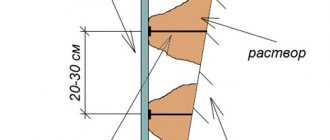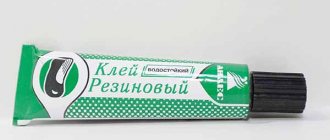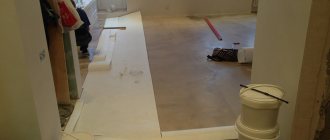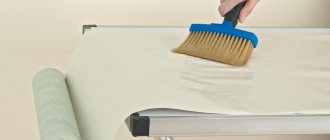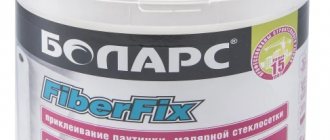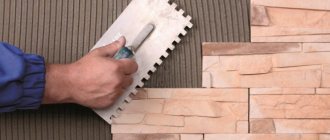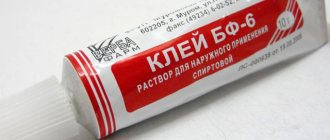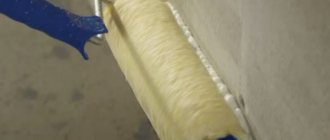Is it possible to glue wallpaper onto wood boards?
There are two opposing opinions on this issue. Some of the craftsmen talk about the complete impossibility of carrying out such internal work, while the other says the opposite.
The fact is that non-woven, vinyl and paper products are usually glued without serious surface preparation. Often this is a simple matter of removing old coating. But this happens in the case of walls finished with plaster, which ensures the necessary adhesion of materials. If the work is carried out on a base of wood boards (chip and fiber), then problems arise. First of all, this is the subsequent peeling of strips in corners and at joints. Such defects arise due to poor surface preparation; it requires much more time and effort.
Indeed, gluing wallpaper on fiberboard, chipboard and MDF is not easy, but if everything is done step by step and correctly, the integrity of the coating will be ensured.
How to glue MDF to plaster
When decorating walls with MDF panels, it is recommended to use universal construction adhesive, polyurethane foam or liquid nails. It is preferable to use liquid nails, which will allow you to securely fasten the material to the wall with almost any coating.
For reliable fixation, it is necessary to prepare the surface and carefully level it. Any irregularities can cause the MDF to peel off, become deformed and even crack.
You can make sure there are no irregularities using a building level or another long and level object - a tape measure or ruler. After this, the base must be degreased.
As for the universal adhesive composition, you need to choose only one that guarantees reliable and safe adhesion to materials such as brick, concrete, drywall and natural wood.
When choosing a composition, you should carefully read the instructions for its use. It should contain information regarding the method of application, information on consumption, time of initial fixation and complete drying.
Frameless installation - covering walls with panels
There is an alternative installation method that involves the use of “liquid nails” glue. The panels can be glued either to the frame or directly to the walls, if the unevenness on them does not exceed 2 mm/m. Often this is the method chosen for cladding unfinished brick or block masonry; it is only important to choose the correct adhesive composition.
It is recommended to use quality products. The glue must remain flexible after drying; give preference to compounds based on rubber or polyurethane. For occasionally heated dachas, you should choose frost-resistant glue; other features are determined by the surface material for gluing.
Don't forget to properly prepare the walls. Masonry and plaster must be thoroughly impregnated with primer mixtures to increase adhesion.
Corners and connections - we use a full range of fittings
The main advantage of working with MDF panels is that the fittings for cashing out the corner joints are mounted superficially, that is, after the installation of the sheathing is completed. It is highly not recommended to use plastic fittings with grooves for PVC panels. Trimming the panels must be done quite accurately, the gaps in the internal corners should not exceed 1.5–2 mm/linear. m, which is quite enough to compensate for temperature expansion.
The main element of the fittings is a universal corner profile. It consists of two thin MDF strips, bonded with laminated film, and can be used to decorate both internal and external corners. To ensure correct and beautiful alignment of the overlays at the corners, their edges are cut in a miter box at 45° with a general bevel outward. When finishing corners on slopes, the angle will not be correct, so local trimming is recommended. Installation is carried out using glue for wooden products based on polyvinyl concentrate.
Another element of the fittings is the joining strip. It is used for splicing sections of cladding when the length of the molding is insufficient or for combining panels of different colors in one plane. A mounting strip should be provided at the installation site of the connecting element.
Finishing MDF is an easy way to transform a room at minimal cost
Today we will look at such a material for interior decoration as MDF panels. This type of product is excellent for carrying out budget repairs, and an additional advantage of this solution is that the installation work can be done without any problems with your own hands. I will describe the whole process in as much detail as possible, and you just need to use all the recommendations from this review.
Using MDF wall panels, you can transform a room in one day
Review of effective brands
Among the above groups of glue, several brands with high performance have gained the most popularity. According to reviews from professionals, when choosing, you should give preference to such brands.
Titan wild
Glue belongs to the group of liquid nails and is a universal professional product. The Titan wild composition successfully replaces fastening with screws, self-tapping screws or nails. The glue is capable of fixing MDF panels on any surface. It is used both indoors and outdoors. The advantages of the brand include:
- reliable fixation without damaging the structure of the material;
- moisture resistance - 100%;
- cost-effectiveness;
- setting speed;
- Possibility of use at different temperatures.
Titebond
The adhesive is based on an aliphatic resin. It is used in carpentry for gluing wooden parts, applying laminate, MDF, chipboard, and assembling furniture. The advantages of Titebond glue include:
- fast setting;
- readiness to work;
- resistant to moisture, heat, solvents;
- ensuring the strength of the bonding boundary is much higher than that of wood.
The glue has the appearance of a viscous yellow emulsion, after drying it is translucent. Resistant to freezing, ignites when temperatures exceed 100 ⁰С.
"Moment-1"
Universal adhesive “Moment-1” is perfect for gluing surfaces made of different materials, is moisture-resistant and can withstand temperatures from -40 ⁰С to +110 ⁰С. The glue dries very quickly thanks to the components included in it:
- rubber resins;
- rosin;
- ethyl acetate;
- acetone;
- hydrocarbons.
Glue "Moment-1" is a light yellow thick liquid. The optimal temperature for work is from +18 ⁰С to +25 ⁰С. When attaching the panels, air flow should be ensured to avoid poisoning by toxins.
Tytan Euro-Line 601
Adhesive is a type of universal construction adhesive. It is used indoors and outdoors. The base on which MDF is mounted can be made of wood, concrete, brick, or plaster.
See also
Types of adhesive compositions for polycarbonate and do-it-yourself rules for use
Tytan Euro-Line 601 adhesive is based on rubber. It is used for repairs and finishing with MDF panels. The main characteristics include:
- strong and fast grip;
- strength;
- hardening within 24 hours;
- heat resistance ranging from -30 to +60
"Moment Crystal"
The glue is colorless, transparent, dries quickly and leaves no marks as a result of working with it. Liquid nails reliably fix MDF panels installed on the ceiling or walls indoors. "Moment Crystal" is well suited for gluing panels without top finishing.
The peculiarity of this variety is that the speed and reliability of setting depends on the force with which the surfaces were pressed. “Moment Crystal” is characterized by high frost and moisture resistance.
Makroflex MF220 Heavy duty
This brand of glue is intended for joining different materials:
- MDF;
- drywall;
- polystyrene foam;
- chipboard;
- metal;
- ceramics;
- wood;
- gypsum
The form of the glue is a white paste based on polyacrylates. The optimal temperature for fixation is +10 ⁰С and above. Among the characteristics of Makroflex:
- maximum holding time - 15 minutes;
- no odor;
- Possibility of use outdoors and indoors;
- great gripping force.
Liquid Nails LN-910 Panels
This brand of liquid nails is indispensable for quickly covering a room with panels, gluing decorative elements, baseboards, and moldings. The adhesion is reliable if brick, concrete, wood, plywood, chipboard and other materials are used as the base.
The adhesive is intended for interior use. It is distinguished by a number of characteristics:
- elasticity;
- the ability to adjust the gluing within 15 minutes after connection;
- obstacle to deformation;
- long (up to 20 years) service life;
- ability to freeze and defrost.
Liquid Nails LN-901 Heavy Duty
The composition is based on synthetic rubber. Capable of creating the strongest connections in difficult conditions. Can be used both indoors and outdoors. Sets quickly. Can be used at temperatures from -40 ⁰С to +70 ⁰С. The following materials are used as glued materials:
- MDF panels;
- tree;
- brick;
- tiles;
- cork;
- plywood;
- drywall.
Temperatures from -40 °C to +70 °C are optimal for operation, from +5 °C to +38 °C - for work.
Surface preparation
- The door leaf is removed from the hinges. If the hinges are old, you will need a pry bar. Self-tapping screws can be easily unscrewed with a screwdriver.
- The door is placed on the floor or on an installed platform, which can be two chairs. The fittings are removed.
- After removing the handles, decor, and hinges, you can begin to clean the base from the old paint layer. It can be removed with a hair dryer, iron or metal spatula.
- If you are going to paste over a new canvas made of coniferous trees, then you need to remove the resin and knots from it with a knife, and then treat the area with acetone.
- The cleaned surface is leveled. Existing protrusions are sanded with sandpaper. Cracks, chips, and pits are filled with a mixture based on wood glue. This way you can restore door leaves made of stacked solid wood, chipboard, and MDF.
- After sanding, the base is primed.
To protect the floor from contamination, it must be covered with oilcloth or a piece of polyethylene.
Operating Instructions
Knowing some secrets of technology, it is not difficult to fasten MDF parts. There are two main ways:
- using lathing;
- gluing the panels to the prepared base.
Each method has its positive sides:
- when using the first method, the condition of the walls does not matter;
- a metal frame in rooms with high humidity will keep the panels undamaged longer;
- insulation fits well under the sheathing;
- the second method is less expensive and easier.
Pasting on the wall
Before gluing the panels, the wall is prepared and proceed according to plan:
- Old wallpaper, dirt is removed, the surface is degreased.
- The wall is primed.
- Mark the panels and cut out the required size.
- Apply the adhesive in waves or dots to panels or walls.
- Gently, but with force, press down on the MDF to glue them together.
- If necessary, align the joints.
- The seams are filled with sealant.
- Leave the panels to dry.
See also
Description and characteristics of Plitonit tile adhesive, operating rules and tips
To close corners without a groove connection, they are covered with moldings. In this case, glue is applied to the central part of the corner so that the liquid does not come out. The use of foam as a fixative allows you to level the wall by increasing the adhesive.
Fastening wall panels
The lathing method is as follows:
- Purchase or purchase bars or profiles.
- The first is installed in the most protruding place of the wall.
- They are distributed in increments of about 50 cm.
- Attach the bars to the wall with dowels or self-tapping screws (depending on the wall material).
- Next, the panels are mounted using special clamps.
Fastening to a concrete wall
To ensure reliable fastening to a concrete wall, you need to purchase MDF adhesive marked “universal.” It must be resistant to moisture, temperature changes, and chemicals. The surface is cleaned, leveled, and primed. Glue is applied to the MDF and after some time it is applied to the concrete wall. Tear it off for a while (to air out the glue) and finally glue it to the wall. In order for the panels to be level, it is important to install the first one correctly.
Installation of skirting boards
Skirting boards for MDF panels deserve special mention. For the most part, they are used to cover the corners between the wall and the ceiling, or to decorate the upper end of wall panels. The plinth is installed in the same way as other fillets; the installation is carried out using transparent silicate glue.
The issue of fixing the floor plinth remained unresolved. There will be no special problems if the lower guide of the frame is lowered to 10–15 mm from the floor. If there is a rough base or the walls are covered with panels, fastening can also be carried out using standard means. The practice of chemically attaching skirting boards using liquid nails is common: the front surface of the panels has excellent adhesion.
Source: www.rmnt.ru
Is it possible to glue wallpaper onto wood boards?
There are two opposing opinions on this issue. Some of the craftsmen talk about the complete impossibility of carrying out such internal work, while the other says the opposite.
The fact is that non-woven, vinyl and paper products are usually glued without serious surface preparation. Often this is a simple matter of removing old coating. But this happens in the case of walls finished with plaster, which ensures the necessary adhesion of materials. If the work is carried out on a base of wood boards (chip and fiber), then problems arise. First of all, this is the subsequent peeling of strips in corners and at joints. Such defects arise due to poor surface preparation; it requires much more time and effort.
Indeed, gluing wallpaper on fiberboard, chipboard and MDF is not easy, but if everything is done step by step and correctly, the integrity of the coating will be ensured.
